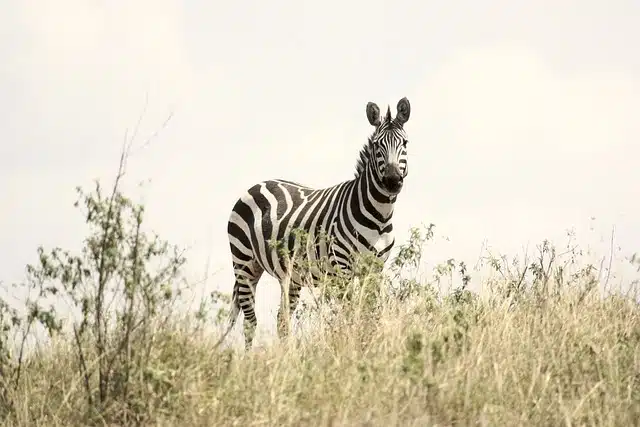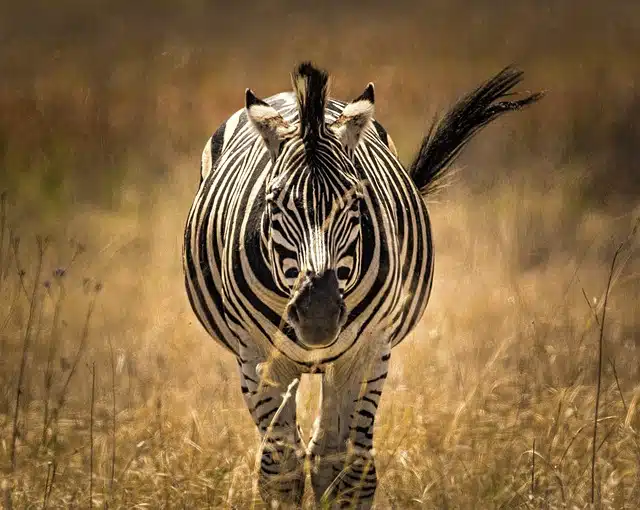
Zebras belong to the genus Equus.
The concept of zebra refers to a mammalian animal that, like the horse and the donkey (also called donkey ), belongs to the genus Equus . Zebras are characterized by combining black and white stripes on their body.
Originally from Africa , zebras are soliped quadrupeds : they have a single finger whose nail functions as a helmet. They generally weigh about three hundred kilograms and reach a height of up to 1.5 meters, with females and males being of a similar size.
Zebras are herbivores and feed on shoots, branches, bark, leaves and grass. It is common for them to eat during the morning and afternoon. These animals , on the other hand, have hyenas and lions as their main predators. Human beings, through hunting, also threaten the lives of zebras.
Zebra species
Currently there are three species of zebra. The common zebra ( Equus quagga ) is the most common, while the mountain zebra ( Equus zebra ) and Grévy's zebra ( Equus grevyi ) are less numerous.
The physical appearance of the zebra is worthy of admiration and, in fact, it has received a lot of attention since it was discovered by humans: given the peculiarity of its striped design, it has starred in all kinds of works of art, including its appearances in cartoons and animated films. This is one of the many examples that serve to remind us that we have not invented everything, that art is also found in nature itself.
Until not long ago, it was believed that the zebra was a white animal with black stripes, and one of the reasons to support this statement was that some individuals of this species have a white belly. However, thanks to various studies on embryos, it was discovered that their background color is black , and that the white stripes and belly color appear over time.

Zebras are black with white stripes.
About the stripes
The stripes are usually vertical on the head, neck, front quarters and main part of the body; Horizontal stripes usually form in the area near the tail and on the hind legs. Regarding the reason why this striped design is generated, there are several opinions and hypotheses, although those mentioned most frequently are usually those that point to a mimicry mechanism.
One of these theories indicates that the zebra's vertical stripes can help it hide in the grass through the phenomenon known as disruptive coloration , a form of camouflage that disguises the contour of the body, whether of an animal, a person or even a a machine, making use of a high contrast color pattern.
In addition, it is believed that the striped design makes the zebra appear gray, something that further helps make the job of its predators more difficult. However, this theory has been refuted on more than one occasion, alleging that the animals that hunt zebras, including the hyena and the lion , cannot see clearly at great distances, and that for this reason they rely on their olfactory capacity.
The zebra crossing
Zebra crossing is called, on the other hand, the sector of the public road that is delimited with white stripes parallel to the sidewalk or sidewalk and that gives preference of passage to pedestrians over vehicles in the absence of other signs that regulate the crossing. transit .
Zebra crossings emerged in the early 1950s in the United Kingdom . Over time, they spread to other countries with names such as pedestrian path , pedestrian strip and pedestrian stripe .
